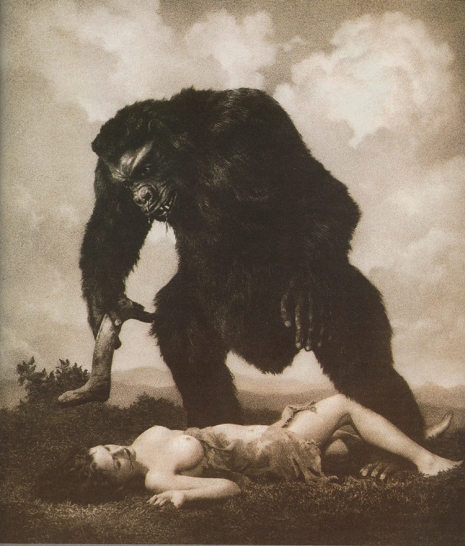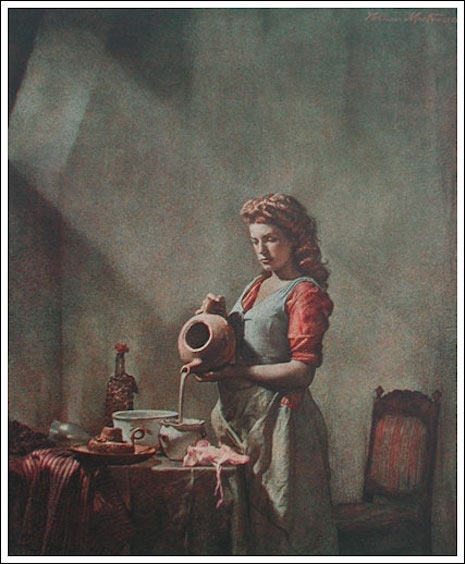
“L’Amour,” probably William Mortensen’s most famous image
It’s not many photographers whose works can withstand comparison to Rembrandt and Vermeer, but if there is one, then William Mortensen is that photographer. Debates about the “status” of photography as both neutral recorder of reality and device for exuberant expressions of artifice are as dusty as the question of who “lost” China—it’s both—but Mortensen was decidedly pitched on one end of that debate, on the side of those who would meticulously create an expressive illusion for the purpose of being captured by the lens. Few were greater at that particular skill.
Anton LaVey was a fan, and so was Ansel Adams who called him the “Antichrist.” William Mortensen was clearly no ordinary photographer.
Monsters and Madonnas is the name of a 23-minute documentary narrated by Vincent Price about Mortensen’s life and particularly his stunning work that was completed sometime in the early 1960s.
Born in Utah, William Mortensen spent the formative years of his career in Hollywood working as a still photographer on Cecil B. DeMille’s King of Kings, among other gigs, before setting up shop in Laguna Beach in 1931. Mortensen’s experiences in the fantasy factory of Hollywood provided a solid starting point for his jaw-dropping exercises in imaginative manipulation. Consciously channeling the Old Masters of centuries past, Mortensen tirelessly executed dozens of astounding portraits and evocative “scenes”—pictures so ravishing that the viewer is often bound to question their status as photographs.
I mentioned Rembrandt and Vermeer. I couldn’t find it on the Internet but it’s shown in Monsters and Madonnas—Mortensen’s portrait “My Father” shows a depth of humanity that is directly reminiscent of Rembrandt’s accomplishments, while his 1938 picture “Pouring Milk” was consciously inspired by Vermeer and netted him the Royal Photographic Society’s coveted Hood Medal—an honor seldom awarded to non-Britons—for photographic work liable to “promote or raise awareness of an aspect of public benefit or service.”

“Pouring Milk,” ca. 1938
In Mortensen’s work one also sees something of Norman Rockwell’s ability to represent abstract notions vividly and charmingly, and several of Mortensen’s pictures put me in the mind of the whimsical expressive busts of Franz Xaver Messerschmidt (which if you haven’t seen, go look). As Vincent Price says, Mortensen’s pictures “show what photography is capable of achieving.”
In his time in Hollywood, Mortensen photographed portraits of many stars, including Jean Harlow, Rudolf Valentino, Clara Bow and so on; meanwhile, his later photographic work required so much in dramatic facial expression that several of his models later found success as actors, including Deborah Kerr, Rock Hudson, and Charles Coburn. In the documentary, frequent subject Jeanne Crain, who was nominated for the Academy Award in 1949 but is no longer much remembered, is on hand to testify to Mortensen’s respect for artistic history and appetite for hard work.
Mortensen was clearly a genius—while much of his subject matter was lurid—see “The Vampire” and “Slave Girl”—his classicism and rigor prevented his works, which included many nudes, from feeling exploitative in the slightest. The Mortensen School of Photography, founded in 1931, ushered many hundreds of students into the world of artistic photography.
Many more stunning Mortensen images after the jump…...





